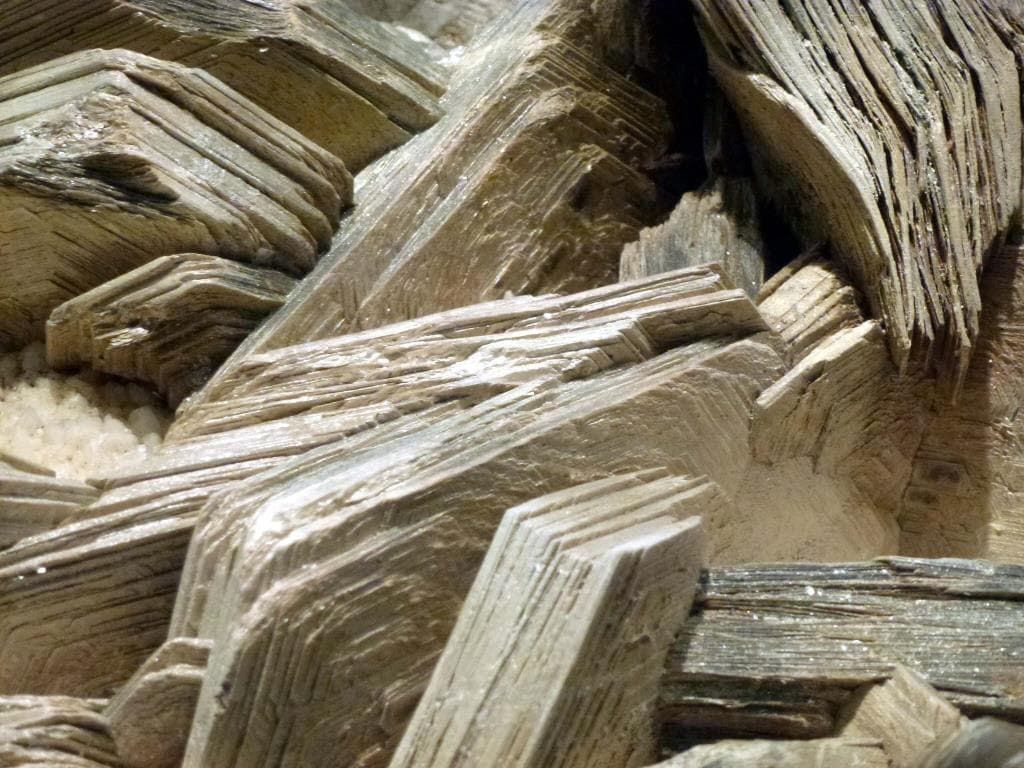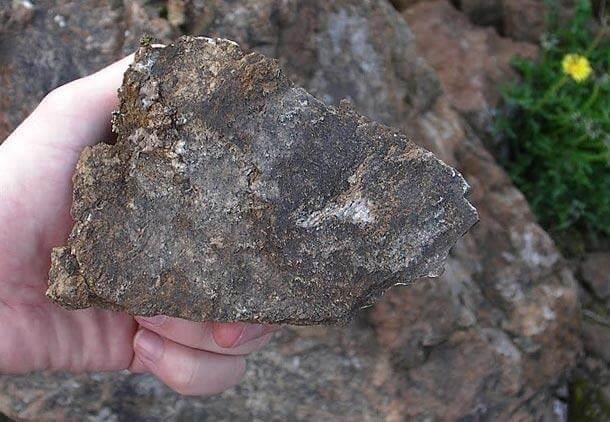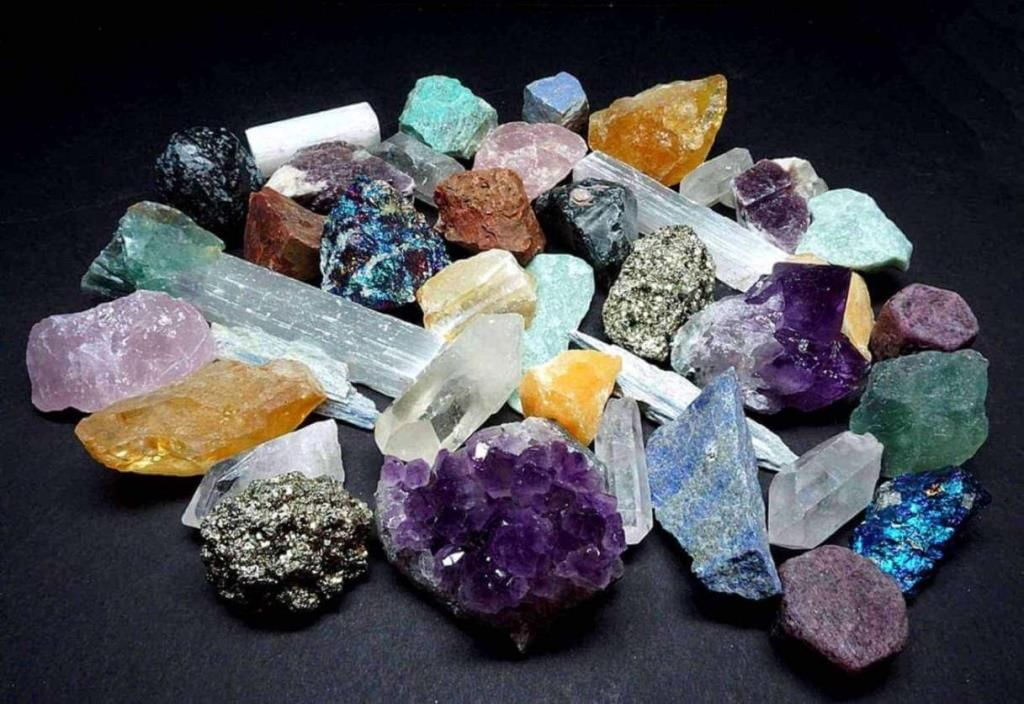NCERT Solutions for Class 10 Geography Chapter 5 - Minerals and Energy Resources
Q1: Multiple choice questions
(i) Which one of the following minerals are formed by the decomposition of rocks, leaving a residual mass of weathered material?
(a) coal
(b) bauxite
(c) gold
(d) zinc
Ans: (b) bauxite
Bauxite forms through the decomposition of surface rocks. This process removes soluble elements, leaving behind a residual mass of weathered material that contains bauxite.
 Bauxite
Bauxite
(ii) Koderma, in Jharkhand, is the leading producer of which one of the following minerals?
(a) Bauxite
(b) Mica
(c) Iron ore
(d) Copper
Ans: (b) mica
Mica deposits are primarily found in the northern Chota Nagpur plateau, with Jharkhand's Koderma-Gaya-Hazaribagh belt as the top producer. It is also found in parts of Rajasthan and Andhra Pradesh.
 Mica
Mica
(iii) Minerals are deposited and accumulated in the strata of which of the following rocks?
(a) sedimentary rocks
(b) metamorphic rocks
(c) igneous rocks
(d) none of the above
Ans: (a) sedimentary rocks
Sedimentary rocks contain various minerals arranged in beds or layers. These minerals form through deposition, accumulation, and concentration within horizontal layers.
(iv) Which one of the following minerals is contained in the Monazite sand?
(a) oil
(b) uranium
(c) thorium
(d) coal
Ans: (c) Thorium
Thorium, found in Jharkhand, the Aravalli ranges of Rajasthan, and the monazite sands of Kerala, is used for generating nuclear power.
 Thorium
Thorium
Q2: Answer the following questions in about 30 words.
(i) Distinguish between the following in not more than 30 words.
(a) Ferrous and non-ferrous minerals
(b) Conventional and non-conventional sources of energy.
(ii) What is a mineral?
(iii) How are minerals formed in igneous and metamorphic rocks?
(iv) Why do we need to conserve mineral resources?
Ans: (i)
(a) Ferrous minerals are in the category of metallic minerals that contain iron (Fe). The composition of iron varies from mineral to mineral. Pyrite is an example of a ferrous mineral. Non-ferrous minerals are the metallic minerals that do not contain iron (Fe). Gold (Au) is an example of a non-ferrous mineral.
 Minerals
Minerals
(b) Sources of Energy:
| Conventional | Non-conventional |
| (i) They make use of non-renewable sources of energy. | They make use of renewable sources of energy. |
| (ii) They are expensive. | They are cheaper. |
| (iii) They can cause pollution; e.g., coal, petroleum, natural gas, electricity, etc. | No pollution is caused by them; e.g., the solar, wind, tidal, geothermal, biogas, etc. |
(ii) Minerals are defined as solid, inorganic, naturally occurring substances with a definite chemical formula and general atomic structure. Minerals are found in varied forms in nature, ranging from the hardest diamond to the softest talc.
(iii) Minerals generally occur in igneous and metamorphic rocks. In most cases, they are formed when minerals in liquid or molten and gaseous forms are forced upward through cavities towards the earth’s surface, they cool and solidify as they rise in the cracks, crevices, faults or joints. The smaller occurrences are called veins and the larger is called lodes.
(iv) We need to conserve mineral resources because of following reasons:
(i) Mineral resources require millions of years to form and, therefore are finite and non-renewable in nature.
(ii) The continued extraction of ores will lead to increase in cost as extraction comes from greater depths.
(iii) There is also a decrease in quality along lower depths.
Q3: Answer the following questions in about 120 words.
(a) Describe the distribution of coal in India.
Ans: Coal Distribution in India
- Coal is the most abundant fossil fuel in India, crucial for commercial energy needs.
- There are three main types of coal:
- Lignite: Low-grade brown coal, mainly found in Neyveli, Tamil Nadu.
- Bituminous: Most widely used, suitable for energy and metallurgical purposes.
- Anthracite: Highest quality hard coal.
- Coal is primarily found in two geological ages:
- Gondwana coal: Over 200 million years old, located in the Damodar Valley (West Bengal and Jharkhand), with key coalfields in Jharia, Raniganj, and Bokaro.
- Tertiary coal: About 55 million years old, found in northeastern states like Meghalaya, Assam, Arunachal Pradesh, and Nagaland.
- Coal is bulky and loses weight when burned, leading to heavy industries and thermal power stations being located near coalfields.
(b) Why do you think that solar energy has a bright future in India?
Ans: India has a bright future for solar energy due to several key factors:
- Abundant sunlight: Being a tropical country, India receives a large amount of sunlight, making it ideal for solar energy generation.
- Rural electrification: Solar energy is increasingly popular in rural areas, providing reliable power to regions with limited access to traditional electricity.
- Environmental benefits: By reducing reliance on firewood and dung cakes, solar energy helps decrease deforestation and environmental degradation.
- Agricultural advantages: Less use of dung cakes for fuel ensures a better supply of manure for farming, which enhances soil fertility.
|
66 videos|614 docs|79 tests
|
FAQs on NCERT Solutions for Class 10 Geography Chapter 5 - Minerals and Energy Resources
| 1. What are the different types of minerals? |  |
| 2. How are minerals extracted from the earth? |  |
| 3. What is the significance of energy resources in our daily life? |  |
| 4. What are the major sources of energy in India? |  |
| 5. How do minerals and energy resources impact the economy? |  |

















